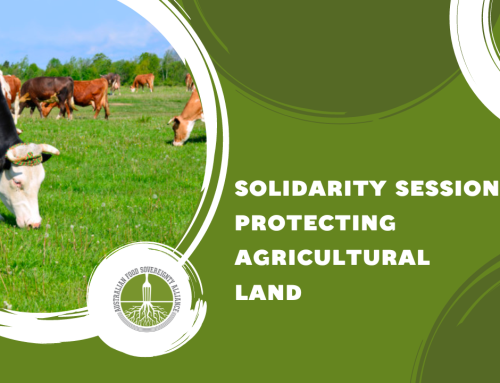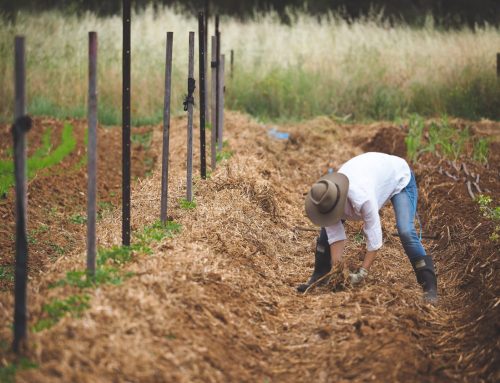Story by Amory Starr, May 2014
 Adrian Card and I were garden warriors together at Colorado State University at the turn of the century. With Adrian’s expert assistance, students had established a vegetable garden amidst the horticulture department’s turf trials. For students in crop sciences, this student-run garden would be their only chance to learn about organic agriculture until 2007 when an organic agriculture minor was established. In 1999 their textbooks were written by chemical corporations and students reported that when they asked professors about organic agriculture, their interest was dismissed with statements like “crazy people from the city are going to destroy agriculture.”
Adrian Card and I were garden warriors together at Colorado State University at the turn of the century. With Adrian’s expert assistance, students had established a vegetable garden amidst the horticulture department’s turf trials. For students in crop sciences, this student-run garden would be their only chance to learn about organic agriculture until 2007 when an organic agriculture minor was established. In 1999 their textbooks were written by chemical corporations and students reported that when they asked professors about organic agriculture, their interest was dismissed with statements like “crazy people from the city are going to destroy agriculture.”
My political economy of food course was the only credited alternative to industrial agriculture. And the garden. Adrian designed it to be a viable model of a commercial market garden, able to be plowed with the smallest-scale commercial equipment. I volunteered at the garden, where I learned about weeds (and which ones were edible) and how to harvest several crops. Adrian and I supported the students in defending the garden and the soil they had built and the garden still stands, celebrating its 17th year.
Adrian has worked as an Agriculture Extension Agent for ten years now. Reflecting on the changes to the US national food system as I participate in dialogues about changing Australia’s system, I realized that Adrian has been in the thick of it during these changes. I wanted his perspective on how Extension has changed to address the shifts to ecological agriculture and direct marketing.
A quick background to Adrian program
First a quick introduction to Adrian’s agency for Australian readers. The Land-Grant Universities were established in 1862 when each state was granted resources to establish and endow universities with the mission of teaching practical agriculture, science, and engineering.
The Cooperative Extension System was established in 1914. It is funded by the US Department of Agriculture and delivers programming through each state’s Land-Grant University. 2900 counties in the country have an extension office. The purpose of the program is to help farmers use research-based knowledge.
Adrian has advocated for extension to provide programming directed at the needs of smaller-scale producers, defined as farms with revenue under $250,000, many of whom are organic producers.
Colorado Building Farmers program
One program is called ‘Colorado Building Farmers’. It’s an 8-week short course teaching business planning and management. It’s designed to empower the next generation of farmers and most students are first generation farmers. For them, the greater and more challenging factor for them is planning and management skills. Wherever it is offered, local coordinators create an advisory committee composed of local farmers and professinals to identify needs beyond our core programs and bring in producers and teachers. That’s the first beginning farmer development program ever offered in Colorado as far as I know.
Investigation of irrigation
Another program Adrian is proud of is an investigation of irrigation. Back in 2006 I asked the State, “do we know how much water 20 acre mixed vegetable farms are using?” So we started a project with flow meters on these farms. Generally diverse farms are not as efficient as larger farms, because they have to water for thirstiest crops. We’ve been able to quantify it. 18″ (45.72cm) per irrigated acre (4046.9m²)-season (that’s April-October). Even some of the more advanced producers were sticking their finger in the ground to gauge moisture. I’ve been working with vegetable farmers here to install electronic soil moisture devices. These enable them to visualize soil moisture in three dimensions.
The technology itself is electrical resistance probes put into soil, glued to stick of pvc pipe and wired back to a data logger with telephone copper wire. The materials, a grower can install this for $500, and I’ve evaluated it every year. They’ve been able to rent them from my office and I install and do tech advice. It’s a simple return on investment.
They’re able to schedule irrigations based on better information. This was a step toward getting them to better quantify and better optimize water use. In some cases they were under-irrigating, which was reducing yield. In other cases they were over-irrigating. Sometimes smaller scale farmers don’t know about these advancements. What it means is that in water-tight scenarios they’ll be able to stretch their water further.
They don’t do maths around quantifying compost…. People are ready. I’m finding in these communities that practices in soil sciences and other applications are not supported scientifically, and I don’t want to move behind them, but track them, and find those people in communities who are respected. Behaviour changes in the community — find the folks who are respected and see if they would try some different practices.
I’ve also seen emerging interests among growers and CSU researchers, faculty and staff in using cover crops in dryland andirrigation conventional field cropsconference, talking about:
- soil health
- earth worms
- soil structure
- organic matter
- soil biology stimulated by different cover crop species, etc.
What is not evident to those tracking convention agriculture from the sidelines is it is slowly moving toward the practices that have been seen as the domain of organic ag for the past 30+ years. This is requiring us to think about true measures of sustainability (energy use, soil stewardship, carbon footprint, toxicity in the environment, etc.) instead of simple broad brush strokes of farming ideology. We need more studies on the carbon footprint of organic systems as my hunch (and that of some colleagues steeped in organics) is that it is not as good as we all think and maybe worse than no-till conventional ag… All of this can be quite paradigm bursting if we let it be so…
We have an initiative through a food and ag policy council that I catalyzed in 2005. We created access to Boulder County-owned land. It’s 14,000 acres of irrigated agricultural land, as part of landscape preservation. Historically those parcels were more than 40acres but the direct market growers wanted less than 20 acres. So we created a growers association to allow access where two to four businesses would operate on one parcel under same lease and they had to create bylaws and manage shared resources for electricity and water.
Work team: food systems to work on post-farm gate issues
We’ve created a work team within extension called food systems to work on post-farm gate issues, such as distribution channels, food safety, local food system assessments, developing capacity in the food system in different ways. We are trying to get funding for a food systems coordinator to map out networks and relationships and establish uncommon connections.
Increase local food production and consumption
Adrian listed a number of organisations working around the state to increase local food production and consumption, support the next generation of farmers, and fostering community education around the importance of local food for economic development and community development. He gave the example of a project in LaPlata County, called ‘Apple Days’. There are apple trees all over town, in backyards. They’re getting people to collect their apples and come together to make cider. People take the juice home with them. It’s about building local food culture.




